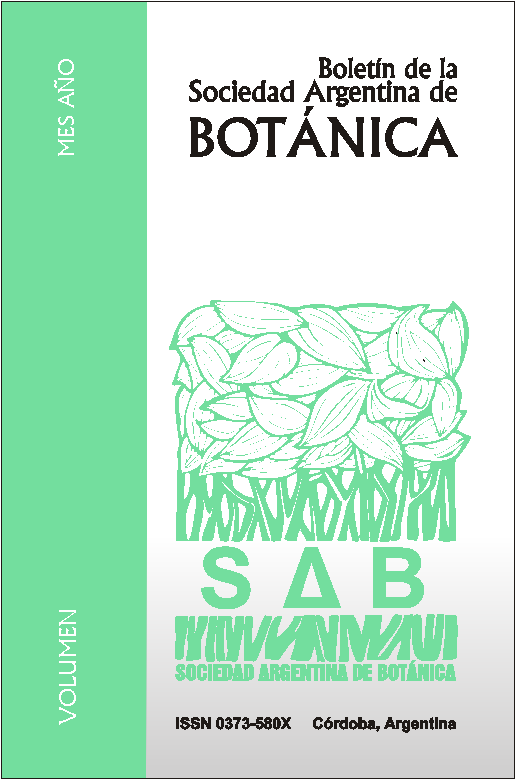Reproductive anatomy of staminate and pistillate flowers of Allophylus edulis (Sapindaceae).
DOI:
https://doi.org/10.31055/1851.2372.v49.n2.7846Keywords:
Allophylus edulis, Sapindaceae, sporogenesis, gametogenesis.Abstract
Reproductive anatomy of staminate and pistillate flowers of Allophylus edulis (Sapindaceae). Sporogenesis and gametogenesis of staminate and pistillate flowers of Allophylus edulis (Sapindaceae) were studied. Young anthers are similar in both types of flowers, they share the basic type of antheral development; they consist of epidermis, endothecium, two middle layers and a secretory tapetum with binucleate cells. Microsporogenesis is normal, the division of pollen mother cells is simultaneous, and microspore tetrads are tetrahedral and decussate. The mature anther in staminate flowers presents epidermal cells thinned at stomio level, and endothecium cells with fibrillar thickenings. A single locule is formed in the theca by dissolution of the septum and pollen grains are two-celled when shed, these are triporate or tetraporate. The gynoecium is reduced to a tricarpelar, trilocular pistillode, with an ovule per locule. Ovule degeneration occurs before meiosis. The mature anthers of pistillate flowers differ anatomically from those of staminate flowers. The endothecium does not develop fibrillar thickenings, middle layers and tapetum generally are persisting, and the stomium is nonfunctional; anthers are indehiscent. The gynoecium in pistillate flowers, has a tricarpellary and trilocular ovary. Each locule contains an ovule hemianatropous, bitegmic and crassinucellate, with an obturator well developed, and the megagametophyte is of Polygonum type. Results are discussed in relation to the known to the family.
Downloads
Issue
Section
License
Provides immediate and free OPEN ACCESS to its content under the principle of making research freely available to the public, which fosters a greater exchange of global knowledge, allowing authors to maintain their copyright without restrictions.
Material published in Bol. Soc. Argent. Bot. is distributed under a Creative Commons Attribution-NonCommercial-ShareAlike 4.0 International license.





